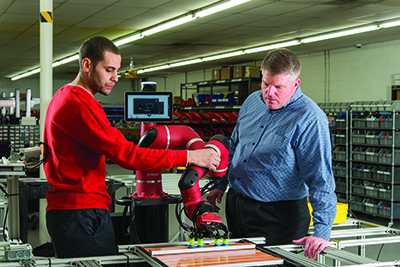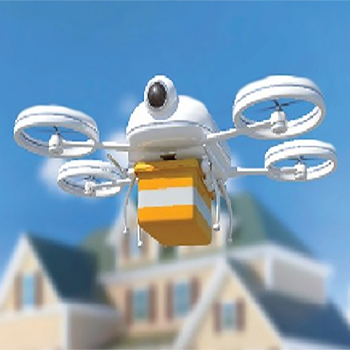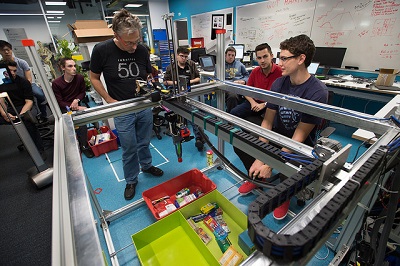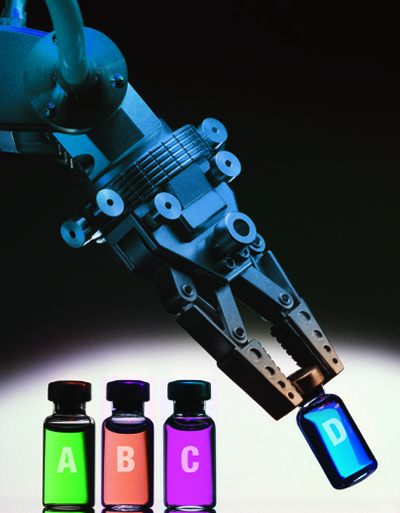Editors’ Picks





Family-owned and operated for three generations, Acorn Sales Company in Richmond, Va., is a specialist in customized, handmade rubber stamps and embossing seals. To maintain throughput, improve quality and reduce its reliance on outside suppliers, the company now uses a collaborative robot to support manufacturing. As a result, the company has significantly shortened its supply chain. Before the new collaborative robot (Rethink Robotics), Acorn purchased pre-cut stamp mounts with handles from a third-party supplier, which led to variable pricing, shipping delays and inconsistent stamp mount quality. The company had long sought an option for bringing this process in house, but…

Delivering to customers at home is inefficient and expensive than delivering B2B. Logistics Service Providers have to carry single packages to high and low-density areas, and often in B2C, the resident isn’t a home. Yet customers are demanding faster and cheaper deliveries. Logistics Service Providers (LSPs) are actively trying to perfect the last mile in order to keep up with greater consumer demands. What more can you expect for last-mile delivery in the near future 1. Faster Fulfillment There’s an emphasis on logistics and fulfillment due to an increase in on-demand or same-day delivery. There is a huge push and…

Amazon has announced the results of its 2017 Amazon Robotics Challenge with winners hailing from Australia, the U.S., and Singapore. The Australian Centre for Robotic Vision succeed in the Grand Championship Combined Task to win the overall Challenge with Nanyang Technological University of Singapore winning the Pick Task and MIT Princeton winning the Stow Task. The Australian Centre for Robotic Vision developed their own Cartesian robot “Cartman” for the challenge. Theirs was the only Cartesian robot at the event, and it is believed to be the least expensive contestant as well. Cartman can move along three axes at right angles…
Bell and Howell has announced that it has spun off its mail-sorting business and certain parcel-labeling technologies to a new company named Fluence Automation. The newly formed company is owned by a group of investors that includes members of the Bell and Howell sorting leadership team. “This strategic move is part of our plan to accelerate Bell and Howell’s continued growth as we extend our capabilities in our traditional mail-production business while also expanding our industry-leading innovation in areas such as e-commerce, robotics and track-and-trace technologies,” said Ramesh Ratan, president and CEO of Bell and Howell. “This move, along with…
A new IDTechEx Research report explores mobile robotics in materials handling and logistics, which is predicted to become a $75 billion market by 2027 before doubling by 2038. These are among the findings of Mobile Robots & Drones in Material Handling & Logistics 2017-2037, which includes automated guided vehicles and carts (AGVs and AGCs); autonomous mobile vehicles and carts/units; mobile picking robots; last mile delivery ground robots (droids) and drones; and autonomous trucks and light delivery vans (level 4 and level 5 automation). Khasha Ghaffarzadeh, research director at IDTechEx and the report’s author, said the figures “mask turbulent transformative change…

TM Robotics

Among the many innovative technologies on display at ProMat this year were an assortment of robotic piece-picking solutions. Until very recently, these technologies were considered unrealistic for addressing the broad range of items handled in the average warehouse. For example, the winner of the inaugural Amazon Picking Challenge in 2015 was able to pick 10 of 12 correct items in less than 20 minutes. It would be a long time, it seemed, before such robots could compete with the dexterity and speed of even the slowest human picker. Now, many big players have unveiled robotic piece-picking technologies, often in partnership…
The Association for Advancing Automation (A3) has announced a series of fall conferences that align with some of the jobs of the future while providing insight into the latest automation innovations, in-depth technical training, practical strategies, and networking opportunities. Together, the three events address disciplines central to automation—robot safety, motion control, motor technologies, vision systems, and collaborative robots. “Automation technologies are fueling entirely new categories of jobs—really creating the jobs of the future—in addition to enabling companies to become more productive and create higher-quality products in safer environments,” said Jeff Burnstein, A3 president. “From instruction on implementing robot safety measures…
KNAPP has announced that it has has purchased a new building adjacent to its current location in Kennesaw, Ga., and a planned expansion will provide capacity for growth of the KNAPP North American workforce by 150 in the initial phases. The 50,000-square-foot multi-purpose facility will be renovated with completion scheduled in the fall of 2018, and will be home for company technology demonstrations, showroom and training facilities. The company is expecting to more than double its current North American workforce to approximately 300. “The company has been experiencing significant growth in its North American market and is forecasting the need…

It's an interesting time for those making decisions about warehouse technology. Automated systems have emerged that can dramatically improve productivity, efficiency and space utilization. But, you’re likely also seeing a lot of news about how Industry 4.0 and the Internet of Things will enable smarter, more adaptive warehouses in the future. Will today’s investments be made obsolete by future developments? The reality is there’s always something new coming and it’s necessary for each organization to weigh the risks of waiting against the risk of adopting technology too early. In the case of warehouse automation, the technology has matured significantly in…

The familiar technology stack of warehouse management systems (WMS) to manage transactions and inventory at the distribution center level and then hand order requirements down to the automation layer is not as simple as it used to be. With the complexities of e-commerce fulfillment, the need to orchestrate and optimize operations is driving the need for advanced execution software in the middle of the stack and for more optimization tools. In short, the DC tech stack has changed. It’s no longer just WMS on top, warehouse control system (WCS) software in the middle, and automated materials handling systems at the…

Carbon



